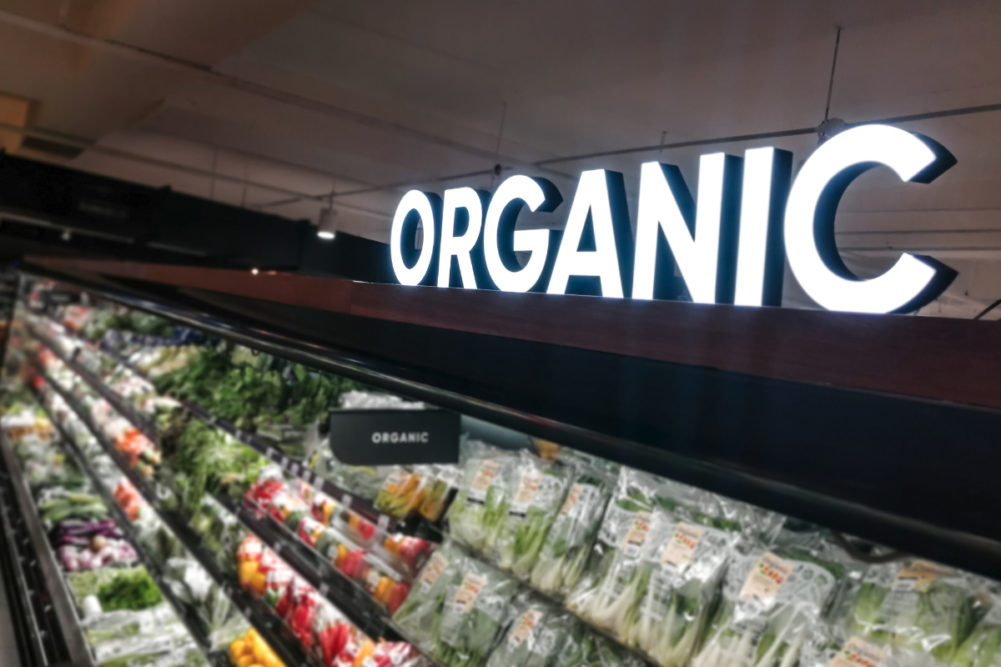BOULDER, COLO. — The dramatic shift to eating more meals at home and surging consumer interest in healthier products is fueling strong growth in natural and organic foods.
Food and beverage accounted for 39% of the wider natural products industry’s growth in 2020, with sales in the natural segment growing 9.8% and sales in the specialty and wellness segment growing 14.1%, according to data from SPINS and New Hope Network.
While e-commerce sales of natural and organic offerings increased 58% to $16.5 billion, the mass market channel drove an estimated 59% of sales, growing nearly 11% to $151 billion. Both channels provided growing competition for the natural and specialty channel, which grew at a slower rate of 6.7% to reach just over $60 billion in sales last year.
“Natural and clean products are now about $1 out of every $10 spent, which is really significant,” said Kathryn Peters, executive vice president of SPINS, during a presentation at Natural Products Expo West Virtual Week. “It isn’t just natural products generally that are booming. Particularly, we’re seeing products with characteristics that support sustainable sourcing and animal welfare continuing to accelerate.”
Sales of animal welfare-positioned products grew 17% in 2020, and sales of grass-fed and free-range products grew more than 13%. Other key attributes that saw significant dollar growth included paleo (32%), plant-based (21.4%), grain-free (18%) and fair trade (13%).
“Consumers are expecting more from the products they buy,” Ms. Peters said. “Whether it’s because of a limited budget or health and wellness considerations to build a stronger body, people are seeking nutritional benefits.”
Plant-based products are checking the mark for consumers when it comes to both health and sustainability, she said. Innovation in the space is bringing heightened health benefits to new categories like frozen breakfast entrees, where sales of plant-based offerings grew 84% in 2020.
“In many cases, plant-based is bringing more nutrient density than the original animal-based analog,” Ms. Peters said. “Plant-based support is growing beyond just health benefits to earth-based benefits like lower greenhouse gas emissions, water conservation and biodiversity.”
“Natural and clean products are now about $1 out of every $10 spent.” — Kathryn Peters, SPINS
Shoppers also are seeking maintainable diets featuring whole, minimally processed foods, with sales of paleo products growing 27% and sales of keto products growing 32% last year. While the majority of consumers don’t follow a specific dietary lifestyle, many shoppers are using those products to construct a health strategy that works for them, Ms. Peters said. Growth in paleo eligible products points to shoppers choosing fewer additives, less refined sugars and avoiding certain inflammatory agents like grains, bean and dairy. The growth in keto eligible products is a sign more consumers are choosing low- or no-sugar options and fewer carbohydrates.
“Consumers are starting to take these trends and personalize their own approach to them, dependent on their needs and their ability to maintain it,” Ms. Peters said.
With 2020’s reminder that a healthy body and immune system are the first line of defense, consumers are seeking more functional ingredients to prevent illness and improve overall health. Sales of functional foods and beverages increased 9.5% in 2020, led by ashwagandha products, which grew 117% year-over-year, and cider vinegar products, which grew 181%. Other functional ingredients that are driving consumer interest include mushrooms for immune support, adaptogens for stress reduction and collagen, nootropics and healthy fats.
The surge in the number of meals consumed at home during the pandemic has created another growth driver for the natural and organic food industry. Meal kit companies benefited from the rise in at-home consumption, with sales of Hello Fresh meal kits growing 48% in 2020, Ms. Peters said.
Natural and specialty retailers capitalized on the opportunity to offer convenient, healthy meal solution programs. Ms. Peters pointed to The Fresh Market’s Little Big Meals program, which offers all the ingredients needed to create a full meal in a $25 bundle, as an example.
“It brings a great family meal deal every week, complete with all the fixings for great value,” she said. “I really encourage brands and retailers to look at ways to make the meal experience more fun and to bring some inspiration.”
Frozen foods also helped meet demand for healthy and convenient meals. Growth in natural products outpaced growth in conventional products across the frozen aisle, led by strength in frozen breakfast items and frozen entrees. Among the top trending frozen attributes were paleo and keto, which saw 102.1% year-over-year dollar growth. Other top attributes included raw, grain-free, fair trade and non-GMO.

